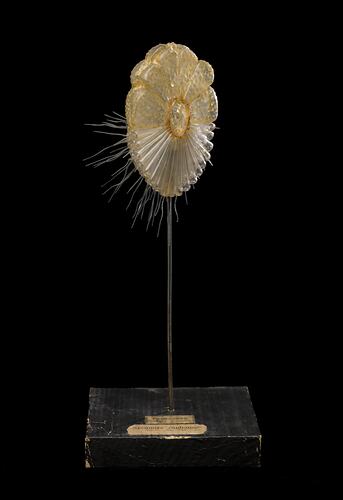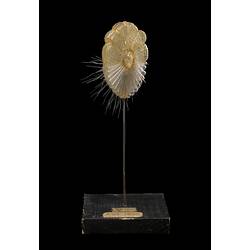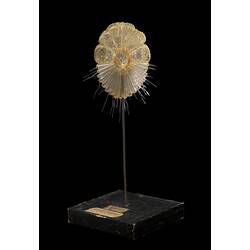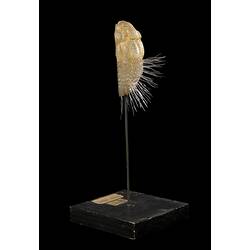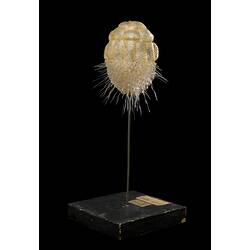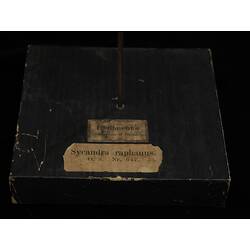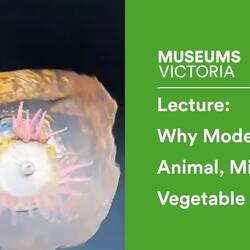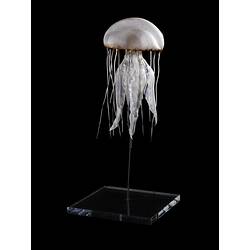Summary
This glass model was made by Leopold Blaschka (1822-1895), a highly skilled glass artist based in Dresden, Germany. Leopold Blaschka and his son, Rudolf (1857-1939) are best known for their glass models of plants and marine invertebrates. They were passionate naturalists and based their models on observations and drawings made in the field and in their own purpose-built seawater aquariums. Their painstaking work produced incredibly detailed and scientifically accurate models that still astonish scientists and artists today.
This Blaschka glass model of the sponge Sycon raphanus represents an early stage in its development, as a free-swimming larvae. The top half of the body is made up of large granular cells, which will later form the outer layer of the body and the internal jelly like 'mesohyl'. The bottom half of the body is comprised of flagellated cells used for swimming. Many marine invertebrates have free-swimming larvae, which allow them to disperse large distances in search of suitable habitat to attach and complete development.
Specimen Details
-
Collection Names
-
Taxon Name
-
Author and date of publication
Schmidt, 1862
-
Number Of Specimens
1
-
Sex
Unknown
-
Specimen Nature
Nature: model, Form: dry
-
Category
-
Scientific Group
-
Discipline
-
Collecting Areas
-
Type of Item
Taxonomy
-
Phylum
-
Class
-
Order
-
Family
-
Genus
-
Species Name
raphanus
